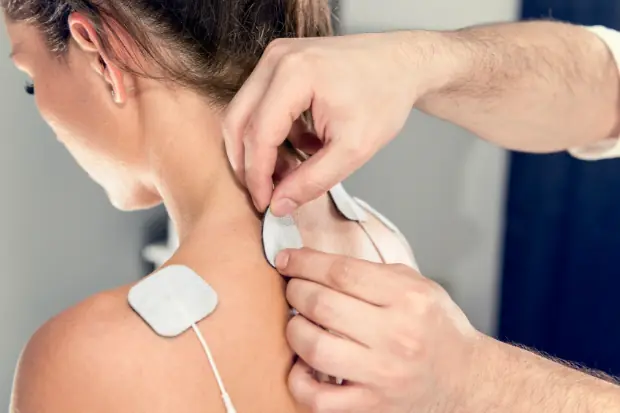
Unless you're an extreme anomaly, if you're an endurance athlete then you no doubt have had a nagging ache or pain that sidelines you for at least a few days. You've probably found yourself sitting there, worrying you're losing muscle mass, experiencing a decrease in oxygen utilization, shedding precious muscle memory, etc.
But there's no reason to lose fitness and gain weight when you're injured. Many of the athletes and clients I train find they are more fit after rehabilitating an injury because they get a chance to try new forms of training during the healing period. Try these unconventional methods for maintaining fitness--even when you're injured.
Electrostimulation (EMS)
You've probably seen it before: The infomercials on TV that feature a man or woman lounging happily on the couch while some fancy electrodes stimulate their stomach into an instant 6-pack. These electrode machines, also known as Electrical Muscle Stimulation, are becoming more and more common online and in fitness magazines.
But surely this is too good to be true? How on earth could you actually "shock" yourself fit?
A recent study (Effects of high-frequency current therapy on abdominal obesity in young women: a randomized controlled trial) gave a group of female subjects 30 minutes of high-frequency current therapy via a series of electrodes placed on their stomachs. The subjects did these sessions three times per week for six weeks, for a total of 18 EMS sessions. The researchers measured waist circumference, body mass index, subcutaneous fat mass (that's fat found under the skin) and body fat percentage. The results were surprising, especially considering these women didn't modify their exercise or diet.
The electrical stimulation caused significant effects on decreasing waist circumference, abdominal obesity, subcutaneous fat mass and body fat percentage, leading the study to find "the use of high-frequency current therapy may be beneficial for reducing the levels of abdominal obesity in young women."
Other studies have shown EMS to be helpful for everything from pain management to helping increase muscle blood flow for warming up prior to performance-related activities. These concepts are detailed in my article How To Use Electrical Muscle Stimulation to Enhance Performance, Build Power and VO2 Max and the podcast episode How the LA Lakers, The Boston Red Sox & Over 104 Other Professional Teams Are Maximizing Recovery.
So, now that you know these devices aren't a complete sham, how can you use them to maintain fitness while injured?
Personally, I attach the electrodes of a more powerful EMS (aka "Compex") to my quads and hamstrings, then do five to ten sets of body weight or barbell squats while I simultaneously run the electrical current through my legs.
This allows me to recruit more muscle fibers than I'd normally be able to during a squat, which makes the workout far more difficult. I can then attach the electrodes to my chest, my shoulders (or both) and do push-ups, overhead presses or bench presses for an upper body effect.
Most EMS units allow you to choose the intensity of the electrical current, so you can increase the pulse as you get stronger in the same way that you can increase the amount of weight you use for lifting as you get stronger.
When combined with EMS, isometrics is also a very effective way to increase the amount of lactic acid in a muscle, which can cause improvements in the ability to tolerate lactic acid during hard workouts or competitions such as 5Ks, cycling races or weight lifting events. To use EMS in this way, you begin by getting into an isometric position.
An isometric exercise, which combines the Greek words "isos" ("equal" or "same") and "metron" ("distance" or "measure"), involves a muscle contraction without any visible movement in the angle of the joint. This is in contrast to traditional moving isotonic contractions, in which your muscle length and joint angle change throughout the exercise.
If you've ever performed a wall squat (when you sit in an imaginary chair with your back against the wall for as long as you possibly can), then you're familiar with the teeth-grittingly high levels of lactic acid and muscle burn that isometric training can produce. Other examples of isometric moves are lunge holds, push-up holds, planks or pull-up holds.
To combine isometrics with EMS, you simply stimulate the muscles that you're working during your isometric sets, which significantly increases the number of muscle fibers you recruit and the amount of lactic acid that builds up inside the muscle.



